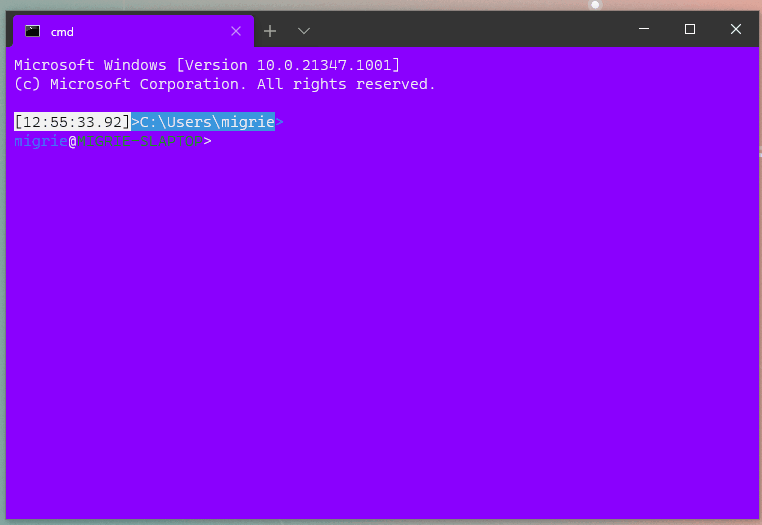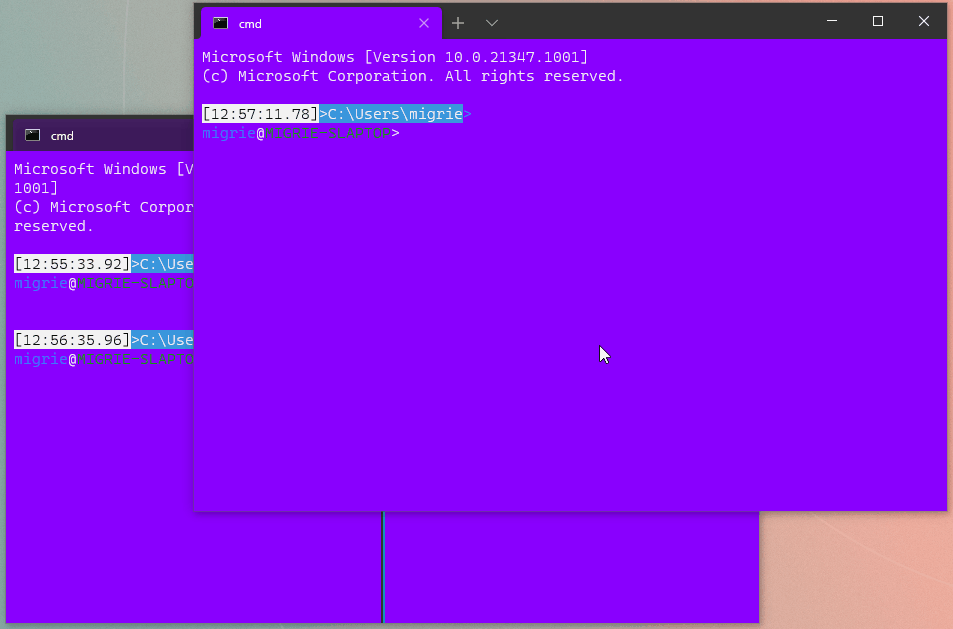## Summary of the Pull Request This PR adds support for renaming windows.   It does so through two new actions: * `renameWindow` takes a `name` parameter, and attempts to set the window's name to the provided name. This is useful if you always want to hit <kbd>F3</kbd> and rename a window to "foo" (READ: probably not that useful) * `openWindowRenamer` is more interesting: it opens a `TeachingTip` with a `TextBox`. When the user hits Ok, it'll request a rename for the provided value. This lets the user pick a new name for the window at runtime. In both cases, if there's already a window with that name, then the monarch will reject the rename, and pop a `Toast` in the window informing the user that the rename failed. Nifty! ## References * Builds on the toasts from #9523 * #5000 - process model megathread ## PR Checklist * [x] Closes https://github.com/microsoft/terminal/projects/5#card-50771747 * [x] I work here * [x] Tests addded (and pass with the help of #9660) * [ ] Requires documentation to be updated ## Detailed Description of the Pull Request / Additional comments I'm sending this PR while finishing up the tests. I figured I'll have time to sneak them in before I get the necessary reviews. > PAIN: We can't immediately focus the textbox in the TeachingTip. It's > not technically focusable until it is opened. However, it doesn't > provide an even tto tell us when it is opened. That's tracked in > microsoft/microsoft-ui-xaml#1607. So for now, the user _needs_ to > click on the text box manually. > We're also not using a ContentDialog for this, because in Xaml > Islands a text box in a ContentDialog won't recieve _any_ keypresses. > Fun! ## Validation Steps Performed I've been playing with ```json { "keys": "f1", "command": "identifyWindow" }, { "keys": "f2", "command": "identifyWindows" }, { "keys": "f3", "command": "openWindowRenamer" }, { "keys": "f4", "command": { "action": "renameWindow", "name": "foo" } }, { "keys": "f5", "command": { "action": "renameWindow", "name": "bar" } }, ``` and they seem to work as expected
59 lines
2.4 KiB
Plaintext
59 lines
2.4 KiB
Plaintext
// Copyright (c) Microsoft Corporation.
|
|
// Licensed under the MIT license.
|
|
|
|
namespace TerminalApp
|
|
{
|
|
delegate void LastTabClosedEventArgs();
|
|
|
|
[default_interface] runtimeclass RenameWindowRequestedArgs
|
|
{
|
|
String ProposedName { get; };
|
|
};
|
|
|
|
interface IDialogPresenter
|
|
{
|
|
Windows.Foundation.IAsyncOperation<Windows.UI.Xaml.Controls.ContentDialogResult> ShowDialog(Windows.UI.Xaml.Controls.ContentDialog dialog);
|
|
};
|
|
|
|
[default_interface] runtimeclass TerminalPage : Windows.UI.Xaml.Controls.Page, Windows.UI.Xaml.Data.INotifyPropertyChanged
|
|
{
|
|
TerminalPage();
|
|
|
|
// XAML bound properties
|
|
String ApplicationDisplayName { get; };
|
|
String ApplicationVersion { get; };
|
|
|
|
Boolean FocusMode { get; };
|
|
Boolean Fullscreen { get; };
|
|
Boolean AlwaysOnTop { get; };
|
|
|
|
void IdentifyWindow();
|
|
String WindowName;
|
|
UInt64 WindowId;
|
|
String WindowNameForDisplay { get; };
|
|
String WindowIdForDisplay { get; };
|
|
void RenameFailed();
|
|
|
|
// We cannot use the default XAML APIs because we want to make sure
|
|
// that there's only one application-global dialog visible at a time,
|
|
// and because of GH#5224.
|
|
IDialogPresenter DialogPresenter;
|
|
void ShowKeyboardServiceWarning();
|
|
String KeyboardServiceDisabledText { get; };
|
|
|
|
UInt64 GetLastActiveControlTaskbarState();
|
|
UInt64 GetLastActiveControlTaskbarProgress();
|
|
|
|
event Windows.Foundation.TypedEventHandler<Object, String> TitleChanged;
|
|
event Windows.Foundation.TypedEventHandler<Object, LastTabClosedEventArgs> LastTabClosed;
|
|
event Windows.Foundation.TypedEventHandler<Object, Windows.UI.Xaml.UIElement> SetTitleBarContent;
|
|
event Windows.Foundation.TypedEventHandler<Object, Object> FocusModeChanged;
|
|
event Windows.Foundation.TypedEventHandler<Object, Object> FullscreenChanged;
|
|
event Windows.Foundation.TypedEventHandler<Object, Object> AlwaysOnTopChanged;
|
|
event Windows.Foundation.TypedEventHandler<Object, Windows.UI.Xaml.RoutedEventArgs> Initialized;
|
|
event Windows.Foundation.TypedEventHandler<Object, Object> SetTaskbarProgress;
|
|
event Windows.Foundation.TypedEventHandler<Object, Object> IdentifyWindowsRequested;
|
|
event Windows.Foundation.TypedEventHandler<Object, RenameWindowRequestedArgs> RenameWindowRequested;
|
|
}
|
|
}
|